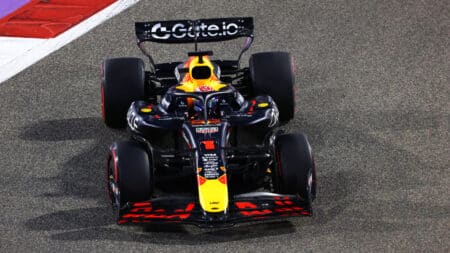The setting – a Melbourne business hotel – is familiar enough… and so is the routine. To obtain a credential you must first stand in line with a cocktail of close friends and familiar strangers, writers with whom you’ve exchanged nodded greetings over the years.

In Australia, however, even potentially tiresome rituals are embellished with a feelgood factor. No other Grand Prix comes close in terms of warm embrace. It’s possible that locals don’t much care for the siren wail of Minardi’s promotional two-seater, whose passenger rides stir the community from about 7.30 each morning, but it’s a symbol of the weekend’s intensity. Most Grands Prix span three days and feature a sprinkling of support activities: Australia lasts four and the track rarely falls silent. In addition to the main event, this weekend features 12 other races – for V8 Supercars, historic sports cars, the regional Porsche Carrera Cup and celebrities (including Sir Chris Hoy) in Mazda 6 diesels – plus a seamless barrage of track parades, aerial activities and stunt displays. During the first tepid, pre-season media briefings – drivers being asked to comment about a track they’ve yet to tackle in cars they hardly know – there is usually a pleasing background burble.

So far things have been fairly tranquil on the news front. FIA race director Charlie Whiting has given his customary pre-season address and does not foresee great short-term debate. “I don’t think there are any controversies brewing,” he said, “although obviously one never knows. I attended the first of the two Barcelona tests and felt it better to discuss issues there rather than here.”
Elsewhere, precise form remains as uncertain as the weekend weather (there is a 70 per cent chance of rain for qualifying, rather less for the race). McLaren has confirmed that long-time sponsor Vodafone will not re-sign once its present agreement concludes at the end of the season, while Marussia has recruited GP2 accident magnet Rodolfo Gonzalez as new reserve (and occasional Friday morning substitute). During three seasons in the GP2 Series, the Venezuelan spent rather more time being interviewed by stewards than scoring points. Crucially, though, he has sponsorship available.
The proliferation of so-called pay drivers on the grid should not, though, be confused with a dilution in quality. This season’s well-backed rookies and sophomores all have decent track records, with victories at GP2 level, yet people are swift to overlook such details and focus on other attributes.
Now an F1 analyst for Swedish TV, former racer Eje Elgh is acutely aware of the sport’s changing priorities: he is part of the management team looking after rising Swede Marcus Ericsson, one of this season’s leading GP2 title contenders, and knows he might soon have to start knocking on F1 team principals’ doors to ascertain the price of opportunity.
“In my day,” he says, “it was usually the other way around. People used to phone, ask me to race and that was it. Sometimes I’d turn up at Le Mans and drive for free, at others I’d be paid about £15,000 for a weekend’s work – and 30 years ago that was pretty good.
“Things haven’t completely changed, though. How did Niki Lauda get his first F1 drive? He brought money. When Ronnie Peterson originally made it to F1, it helped that he came with a supply of Cosworth engines provided by his Italian backer, Count Zanon. Why did Michael Schumacher get a Jordan seat at Spa in 1991? He paid. It irritates me that people assume ‘pay driver’ always equates to hopelessness, because it simply isn’t true…”






